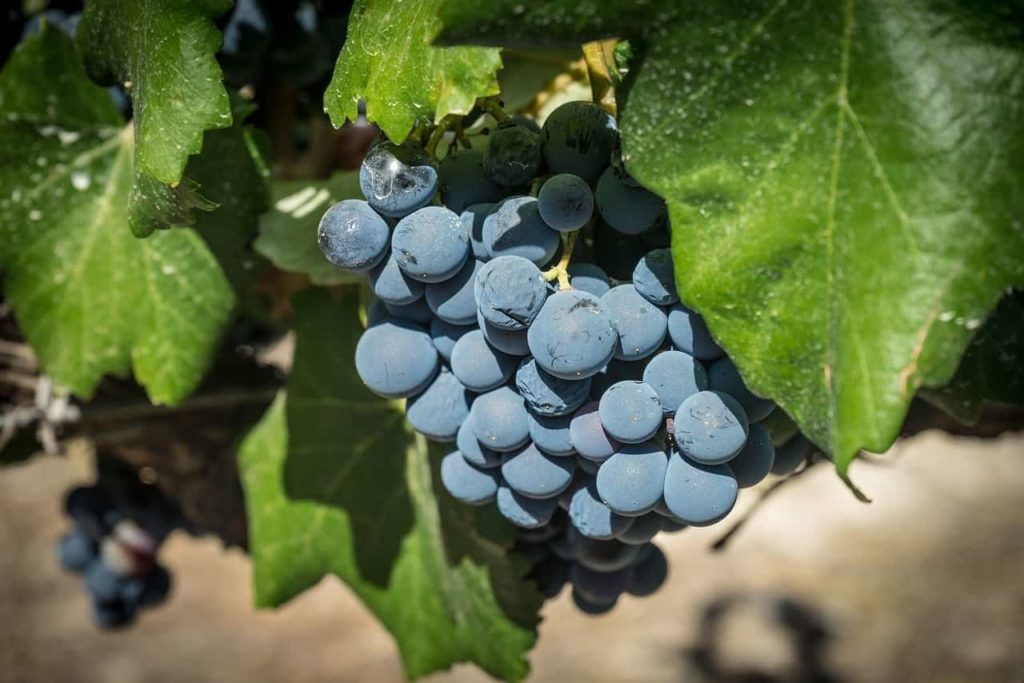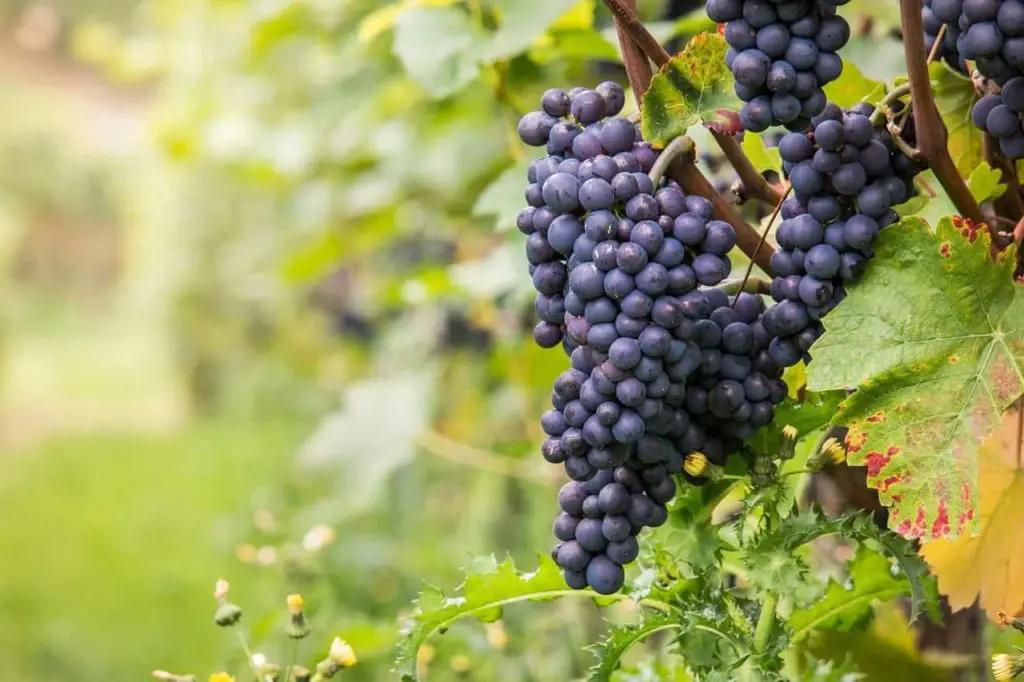Have you ever been in a situation where you find it hard to decide which wine to choose on a wine menu? Are you one of those who wander down the aisle of a local wine shop, reading each bottle’s description, and still can’t make up your mind which wine to buy? Although you know that what you want is red. However, you can’t seem to decide whether you prefer a Merlot or a Pinot Noir.
If you are indecisive about your drink, then this article can help you choose between Merlot and Pinot Noir. Both these spirits are red wines. Although they tend to be similar at times in comparison to a Lambrusco and a Merlot or a Beaujolais and a Pinot Noir, their profiles are very different.
Today, we will provide you with essential information about these types of wine, including their history, differences, and similarities. Likewise, we will explore their profiles in-depth. You will also learn which one best pairs with the food you plan to pair it with. On top of that, we will also provide you with a list of the best bottles of Merlot and Pinot Noir at various price ranges. With this, you will be able to make a well-informed and sound decision based on the budget you have.
Main Differences Between Merlot vs Pinot Noir
To fully understand Merlot and Pinot Noir, you have to first know what their main differences are:
- While Merlot is known for its fruity flavors and softness, Pinot Noir leans toward smoked and earthy notes.
- Merlot is a red wine mostly produced in France. On the other hand, since Pinot Noir is more delicate, it is typically produced in cooler climates.
- Spicy food, cheese, and those with subtle flavours go really well with Pinot Noir, whereas Merlot is perfect to pair with meats and earthy sauces.
- Pinot Noir is a type of red wine with a light body and slightly acid. Meanwhile, Merlot has a low acid level and a full-bodied grape.

Usually, wines are evaluated by several characteristics. While you measure some using scientific methods or with a help of a scale, some are subjective.
Now, let’s take a look at both wines and compare key characteristics.
Flavour
-
- Acidic. Wines with high acidity are citrusy and tart while low acidic types are soft and creamy.
- Oaked. Oaked wines are spicy, rich, and often have hints of caramel, vanilla, and chocolate. On the other hand, unoaked wines are floral, fruity, and fresh.
- Fruity. The fruitiness of the wine will mainly depend on the variety of grape use and climate. Likewise, you will be able to detect it on the palate and nose. The aroma of fruity red wines is bright red cherry and has an almost dark cherry or current taste.
- Tannic. This is what provides wine with structure (tannic structure). A wine with a high tannic structure can be described as robust and heavy
- Sweet. Sweetness is what helps balance the wine’s tannin and acidity level. Off-dry wines typically have a hint of juicy acidity and sweetness.
- Body. This refers to the overall weight of wine in your mouth. A red wine with a full body is weighty and rich in flavor.
Nose
Depending on the variety of grape, the nose or aroma of wine can be earthy, fruity, citrusy, floral, vegetal, and any other scent. Other factors can impact the aroma of wines as well. These include the process of winemaking and the condition of its storage area.
Colour
Red wines come in various hues which are based on the body amount content of the wine.
- Light-bodied red wines have a translucent and lighter colour.
- Medium-bodied red wines are not as translucent and have a medium-rich tone.
- Full-bodied red wines have a deep colour. The most likely reason for this is the high amount of tannins they contain.
- Old red wines that have been aged longer tend to have an almost brown hue.
Alcohol by Volume
Alcohol by Volume or the ABV label on wines will tell you how high or low the alcohol content of your wine is. It also lets you know how much water or other stuff it contains. The majority of wines typically have an ABV that ranges between 12.5% to 14.5%.
Temperature
It is advisable to serve wines at temperatures of 62 and 68 degrees.
Age
The age of a red wine refers to how long you can store your bottle. A wine’s quality will play a major role in this.
Food Pairings
How wine tastes and their profiles tend to pair nicely and complement certain types of foods.

The History of Merlot Wine
Merlot is a French word that translates to The Little Blackbird. It is usually the red wine of choice for beginners to wine drinking. Likewise, it is the second most popular red grape in the United States. Its grape variety is also the most planted in France.
In 1974, a French winemaker in the Right Bank of Bordeaux listed Merlot as an ingredient. The grape is known to have the ability to add wine with fruitiness and softness. Through DNA testing, it is found Merlot was a cross between the Cabernet Franc and the rare Magdeleine Noire des Charentes grapes.
Originally, the grape was used to combine with grapes for Cabernet Sauvignon to produce Bordeaux wines. During the 1800s, the Merlot grape first arrived in the United States where American winemakers use it to start producing wines that are solely made with it. Soon enough, Americans fell in love with the wine’s low-tanning levels and softness.
California gave birth to Merlot wine. But nowadays, it is now pretty popular in Washington State and New York. In fact, there are more than 600,000 acres of land all over the world where Merlot is grown.
The Characteristics of Merlot Wine
The skin of the Merlot grape is red and has the ability to adapt to different climates. These grapes produce softer red wine with a medium to full body. Furthermore, the flavour of the grapes can have noticeable differences depending on the climate where they are grown.
For instance, Merlot wines that have been grown in a cooler climate will have higher tannins, earthier flavours, and more structure. On the other hand, those grown in a warmer climate will have fewer tannins and a more fruity taste. Because of this, wine aficionados who love sweeter wines with low acidity tend to favour Merlots that come from warmer regions.
In terms of flavour profile, Merlot wine is similar to that of Cabernet Sauvignon. However, due to the thinner skin of the Merlot grape, the wine has softer tannins, resulting in a lower acidity level. It is often fruitier combined with a less complex body as well. Usually, the notes you will get are those of ripe blue, black, and red fruit. These are backed by undertones of vanilla, cocoa, and earthy flavours.
Our Favourite Merlot
Rutherford Hill Merlot 2015
Rutherford Hill 2015 Merlot (Napa Valley) is blended with Cabernet Sauvignon and Syrah, this Merlot is tannin and powerful wine. It offers earthy flavours of leather and oak around a rich and decadent core of dark plum.
The colour of this wine is crimson red with intense aromas of dark fruit, such as black currant, blackberries, and blueberries. It is layered with notes of cassis with hints of savoury herbs, anise, and spice. What’s more, it has intricately and intense flavours of dark cherry and pomegranate, with a thread of baking spices. The full-bodied red wine is round with a lush texture and rich tannins.
Merlot Wine and Food Pairings

Merlot wine goes quite nicely with a wide array of food. It complements just about anything, including fillet mignon, veal, or lamb with rich sauces. Likewise, it pairs well with foods with sauces that are hearty and tomato-based, savoury, or creamy with mushrooms or bacon. The wine tastes delightful with barbecued dishes and pizza as well.
Avoid pairing Merlot wine with very spicy dishes, light salads, and delicate fish cuisines.
A Comparison of Merlot vs Pinot Noir
Merlot
- Acidic – Medium
- Oaked – Yes
- Fruity – Black Cherry, Raspberry, Plum, Blueberry, Cocoa, and Black Pepper
- Tannic – Medium-High
- Sweet: Dry
- Body – Full-bodied
- Aroma – Cherry, Cocoa, Vanilla, Clove, Tobacco, and Earthy
- Colour – Dark ruby to garnet with a tint of orange on the rim
- ABV – 13.5% – 14.5%
- Temperature. 60° to 65°
- Age-ability: 3 to 5 year
- Pairings – Roast duck, Turkey, Lean meats, and Roasted vegetables
Pinot Noir
- Acidic – Medium-High
- Oaked – Yes
- Fruity – Cranberry, Cherry, Raspberry, Vanilla, Clove, Licorice, and Caramel
- Tannic – Medium-Low
- Sweet: Dry
- Body – Light-bodied
- Aroma – Ripe Grape or Black Cherry, Earthy, and Spicy
- Colour – Pale and translucent purple to soft crimson
- ABV – 13% – 14%
- Temperature. 63°
- Age-ability: 2 to 18 years
- Pairings – Duck, chicken, veal, pork, tuna, and salmon. and also Asian cuisine
The History of Pinot Noir Wine
The Pinot Noir grape is known as the only red wine grape of Burgundy. It is believed to be a descendant of the mysterious Gouais Blanc grape. Today, you can find about 16 unique types of Pinot Noir grapes. Also, it takes the 10nth spot in terms of the most widely planted grape across the globe with a total of roughly 290,000 acres where it is grown.
Moreover, this type of grape is one of the oldest used in wines, dating as far back as the first century, at a time where Romans defeated Gaul, later becoming France. Pinot Noir was also the wine the Catholic Church chooses for sacraments, as well as by the Cistercian monks. That’s why the people believed that if the wine is good enough for the Church, then it was good enough to be consumed by everyone.
In French, the meaning of Pinot Noir is Black Pine. That’s because the grape grows in cone-shaped clusters that look like a pine cone. On top of that, the skins of the grapes possess a natural dark hue. Due to these clusters, too little or too much water can easily cause the fruit to rot.
Pinot Noir wine produced in California usually contains a higher ABV because of the production methods used there and the climate. The result of this is a more concentrated and riper wine with a darker colour than those wines produced in Europe. And because of how thin their skin is. Pinot Noir grapes are prone to diseases, rotting, and fungus. Hence, it is best cultivated in a dry, cool climate where the vineyard is well-drained with chalky or stony soils.
Our Favourite Pinot Noir
Joseph Phelps Freestone Vineyards Sonoma Coast Pinot Noir 2016
The grapes are picked during the cool pre-dawn hours under lights and sorted before being gravity fed to the tank for a long natural fermentation. It uses an overall average of 17% whole clusters in the final blend. Also, regular punch downs produced a wine with a silky texture, elegant structure, and a distinctive Freestone spice character prevalent throughout the western edge of the Sonoma Coast.
This vintage Pinot Noir has a pleasing bouquet of plum, black currant, baking spices, and sweet vanilla. It is fresh and focused with silky, textural layers of ripe raspberry, black cherry, dried herbs, and tangerine peel culminating in a long, elegant finish.
The Characteristics of Pinot Noir Wine

The DNA of Pinot Noir shows that it is the same as Pinot Gris/Grigio and Pinot Blanc. The latter two are colour variations of the Pinot Noir grape.
A young Pinot Noir has a taste that consists mainly of fruits that include cherry, plum, raspberry, and strawberry. The wine will develop more complex flavours as it matures and reveal chocolate, earthiness, smoke, and truffles.
Pinot Noir Wine and Food Pairings
The profile of Pinot Noir wines is delicate nature and red berry and delicate nature. It complements salmon, pork, duck, tuna, chicken, veal, and other meaty dishes. Likewise, it pairs quite nicely with Asian cuisine, particularly Sashimi and sushi dishes. Another perfect accompaniment of Pinot Noir is the Gruyere de Comté cheese, which is made only 50 miles away from the Pinot Noir vineyards of Burgundy.
Make sure to avoid paring this light-bodied red wine with beef or pork. Also, only choose to pair it with chicken dishes with subtle flavours.
Highest-Rated Merlot and Pinot Noir Wines
The red wines listed below are based on the scores and ratings on Wine Enthusiast Magazine and Wine Searcher.
This list shows that the 2005 Petrus Pomerol from Bordeaux, France is the most sought-after Merlot wine. In fact, it holds an aggregated critic score of 100 and an average price of £3,607.
On the other hand, the Domaine de la Romanee-Conti Grand Cru, Cote de Nuits from Burgundy, France is the most sought-after Pinot Noir wine. This one holds an aggregated critic score of 97 with an average price of £14,797.
Highest-rated under £100
Merlot
Checkmate 2014 End Game Merlot
- Origin – Okanagan Valley, British Columbia
- Points – 94
- Average Price – £54
- ABV – 14.6%
- Description – Strikingly rich, deeply fruited, dark, and toasty
Pinot Noir
Joseph Phelps 2016 Freestone Vineyards Estate Grown Pinot Noir
- Origin – Sonoma County, CA
- Points – 96
- Average Price – £50
- ABV – 14%
- Description – Accents of clove and cardamom filled out by the berry fruit core
Highest-rated under £50
Merlot
Peter Franus 2016 MerlotOrigin – Sonoma County, CA
- Origin – Napa Valley, CA
- Points – 90
- Average Price – £30
- ABV – 14.2%
- Description – Tart and tangy with black fruit and seasoned in leather, tobacco, and black pepper
Pinot Noir
Brooks 2016 Toluca Lane Pinot Noir
- Origin – Willamette Valley, OR
- Points – 94
- Average Price – £34
- ABV – 14%
- Description – A delicious mix of raspberry jam with orange marmalade
Highest-rated under £30
Merlot
Rutherford Hill 2015 Merlot
- Origin – Napa Valley, CA
- Points – 90
- Average Price – £21
- ABV – 14.5%
- Description – Earthy flavors of leather and oak with a rich and decadent core of dark plum
Pinot Noir
Lynmar 2018 Rosé of Pinot Noir
- Origin – Sonoma County, CA
- Points – 94
- Average Price – £21
- ABV – 14.1%
- Description – Pure strawberry and watermelon flavors with a hint of dried herbs
Highest-rated under £20
Merlot
Raymond 2016 Reserve Selection Merlot
- Origin – Napa Valley, CA
- Points – 90
- Average Price – £17
- ABV – 14.5%
- Description – Smooth, rich, and rounded, with thick baked plum and cherry flavors
Milbrandt 2017 Merlot
- Origin – Columbia Valley, WA
- Points – 91
- Average Price – £12
- ABV – 13.5%
- Description – Plush red fruit, herb, and eucalyptus aromas with scrumptious fruit flavors
Pinot Noir
Rodney Strong 2018 Rosé of Pinot Noir
- Origin – Sonoma County, CA
- Points – 92
- Average Price – £18
- ABV – 12.5%
- Description – Candied orange peel, raspberry, and strawberry
Shallow Seas 2018 Rose
- Origin – Willamette Valley, OR
- Points – 91
- Average Price – £13
- ABV – 13.1%
- Description – 100% Pinot Noir, this wine pulls in orange, Meyer lemon, other citrus, as well as strawberry
Highest-rated around £10
Merlot
Townshend 2016 Merlot
- Origin – Columbia Valley, WA
- Points – 82
- Average Price – £10
- ABV – 14%
- Description – Barrel spice, sawdust, green pepper, and game aromas followed by dried fruit taste
Pinot Noir
Pacific Redwood 2017 Organic Pinot Noir
- Origin – Mendocino County, CA
- Points – 86
- Average Price – £9
- ABV – 14%
- Description – Leafy aromas and beefy with tart cherry and rhubarb fruit flavours
FAQ’s About Pinot Noir vs Merlot
What is the smoothest red wine to drink?
One of the sweetest red wines you can drink is Pinot Noir. If you’re a new wine drinker, this is even better, especially if you’re exploring the notes and the overall taste of red wine. Plus, it is easily available everywhere.
How are red wines made?
Red wines do not include the grape’s pulp, unlike white wines. Their winemaking process consists of also crushing the grapes together with the puls. Then, the wine will be fermented, clarified with tannins, proteins, and yeast. Afterward, it is stored in oak barrels.
How to distinguish red wine?
Red wines come in three types:
- Light-bodied red wines have the lowest tannins levels and you can pair them easily with foods.
- Medium-bodied wines have more tannins, as well s presence on the plate in comparison to light-bodied ones.
- Full-bodied red wines contain the highest levels of tannins. They will also feel tough on your tongue. So it’s easier to distinguish.
Pinot Noir vs Merlot: Conclusion
Both Merlot and Pinot Noir red wines originate from France. But nowadays, they are cultivated all over the world. Their flavours and taste profiles are quite different. While Merlot grapes are easier to cultivate and heartier, Pinot Noir grapes are a bit more challenging to grow. In terms of colour and taste, Merlot wine has a deeper hue and milder taste, whereas Pinot Noir has a more robust flavour but lighter in colour.
Merlot’s versatility allows you to pair it with a wide variety of food. Nevertheless, Pinot Noir will not clash with the flavours of different dishes. The latter is also the more expensive option since the grapes are much rarer. Still, blended Merlots do cost more.
At the end of the day, it will boil down to taste and your preference. So it is recommended to get yourself a few bottles of each to help you properly decide which grape variety you truly prefer.


